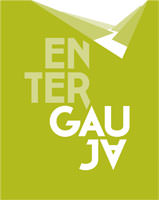
- Enter Gauja
- Things to do
- News & Events
- News
- Events
-
Latest events
31 Dec New Year's Eve at Mālpils Manor » 02 Jan Twilight Winter Walk in Cīrulīši »
- Eat & Drink
- Accommodation
- E-shop
Lend your ear to birdsong and you will hear exhilarating tales of history, land and the people that shaped them. Peer out of the castle tower to be stunned by the primeval carpet unfurling in the forested river valley. Air pulsating with love will persuade of the nobility and courage of Turaida’s Roze. Bask in the sublime harmony of beauty wrought by human hands and the poetry of nature.
Opening hours in summer season:
01.05. – 30.09. – plkst. 9.00 – 20.00
01.10. – 31.10. – plkst. 9.00 – 19.00
10.00 – 18.00 (all exposures are open)
9.00 – 10.00 and 18.00 –19.00 (open-air expositions, the castle Main Tower and the turreted south case)
Opening hours in winter season:
01.11. – 29.02.– plkst.10.00 – 17.00
01.03. – 30.04. – plkst. 10.00 – 18.00
 |
History MuseumExhibitions outdoors and indoors take you through the passage of the centuries. Livonian ruler Kaupo, the mighty Archbishops of Riga, the courageous virgin Maija – Turaida’s Rose and the stories of the destinies of more than 40 generations – nothing is left untold. The newest exhibition “On the Way to Establishment of the State of Latvia. Peasant Liable to Corvee. Independent Farmer. Citizen” in Turaida Manor's house of Peasants Liable to Corvee reflects the events in the territory of Latvia in the 19th century and the beginning of the 20th century. |
 |
Ensemble of Manor BuildingsA walk among the Turaida Manor buildings will have you imagining the scope of the commercial life of the manor, which in its own unhurried, but set rhythm was the foundation for the growth of the place over 300 years ago. |
 |
Medieval CastleThe imposing red brick walls of Turaida Castle stimulate the imagination and the desire to travel back to an age when historical figures emerged from the depths of the exhibitions on view in the castle buildings, sharing their medieval experience and precipitating the confluence of the ages. |
 |
Viewing TowerThroughout the year, the diverse beauty of the Gauja and its surroundings are visible from Turaida Castle’s main tower, allowing visitors to appreciate the primordial nature of surroundings, which are virtually as untouched as they were when viewed by the rulers of the castle back in the Middle Ages. |
 |
Wooden ChurchOne of the oldest wooden churches in Latvia allows one to sense the tranquillity and fulfilment of the soul. In its simplicity, it captivates with its 18th century interior and prompts one to use upon the eternal and the contemporary. |
 |
Sculpture GardenIn their own language, boulder sculptures dedicated to Latvian folksong sing out the secret to the vitality of the people, Latvian wisdom, radiating joie de vivre, energy and melodic thoughts in the mind of any visitor to the Dainu Hill. |
Archery | Nature trails | Blacksmith’s forge | Archaeological excavation site | Souvenirs and Baltic jewellery
The price of a visit per adult is 6.00 EUR in winter, 8.00 EUR in summer.
Annual events
February: Metein Day
April: Easter holiday
June: Summer Solstice Festival
November: Martin's Day.
December: Christmas events
Turaida’s historical centre has developed over the course of more than 1,000 years. The events that have taken place here are closely linked to the course of Latvian and European history.
Around the 11th century, the Livonian people began living on the shores of the Gauja in Turaida. The rhythm of their daily life was closely attuned to nature. Turaida’s name originated from the Livonian language, which belongs to the family of Finno-Ugric languages and can poetically be translated as “God’s Garden”.
At the start of the 13th century, the wooden castle of Livonian ruler Kaupo was located on the Turaida castle mound. After it burned down in 1214, Bishop Alberts of Riga ordered a stone castle to be built. Turaida became the residence of the ruler of the land – the Archbishop of Riga.
After the Livonian War at the end of the 16th century, the Archbishop’s territories came into the ownership of the Vidzeme brotherhood of knights. Turaida became a private property and centre of the manor.
After a fire in 1776, the stone castle was not rebuilt, but a residential house was built for the owners of the manor next to the main castle tower. The economic centre of the manor was located not far from the castle – near the ponds and road. Turaida Manor experienced an economic boom at the end of the 19th and at the start of the 20th centuries.
Nowadays, the testimonies of long centuries are kept, studied and made available to the public by the Turaida Museum Reserve.
Every day at the Turaida Museum Reserve is like an interesting adventure, which allows one to peer at the pages of the past. Here, visitors are welcomed by a sculpture garden – the Dainu Hill, which tells of the importance of the word and values in the past, signs left by Gauja’s Livonians, Turaida’s stone castle and the picturesque view of the Gauja river from the castle’s main tower, a wooden church which is exquisite in its simplicity and the moving story of the virgin Maija – Turaida’s Rose, as well as the atmosphere of the manor’s commercial centre with its inimitable environment and exhibitions, which prompt visitors to return to Turaida, forever providing the opportunity to discover it anew.